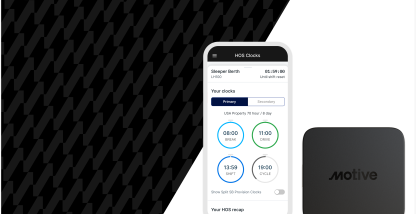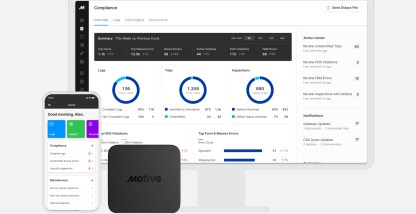The ELD mandate is almost in effect — less than 7 months until enforcement begins. As the deadline approaches, the urgency among fleets is to find a solution for ELD compliance.
Most fleets today are looking for Bring Your Own Device, or BYOD-based ELD systems, where an engine-connected device records vehicle motion data from the Engine Control Module (ECM) and relays it to the driver’s smartphone or tablet via Bluetooth or Cellular.
But not all BYOD ELDs are the same.
It’s important to understand the method each ELD vendor’s method of communicating with the driver’s mobile device in the BYOD model.
The cellular-based connection
The cellular-based ELD model relies on cellular networks to relay vehicle motion data from the vehicle’s ECM to the driver’s mobile device to trigger an automatic duty status change on the driver’s log. The engine-connected ELD has a built-in cellular connection, which it uses to send data through cell towers to the driver’s mobile device.
In the absence of a cellular network, the ELD in the vehicle cannot send data to the driver’s mobile device. That means the driver’s log will not be up to date and they will not be in compliance with the ELD requirements.
Why a cellular-based connection doesn’t guarantee ELD compliance
The dependency of cellular-based ELDs on reliable cell coverage poses a significant compliance threat to drivers. In a recent webinar held by the FMCSA, Danielle Smith, Transportation Specialist, Passenger Carrier Division, highlighted how unreliable cellular-based ELDs can be:
“If your customer is operating out West, where there is very spotty coverage, they may need to understand that [their] device may not be able to populate the driver’s Record of Duty Status if they do not have that cellular connection. That’s very important to understand.”
Most urban areas have decent cellular coverage, but unfortunately, that isn’t where most fleets operate. Drivers often find themselves in remote places with little to no cellular coverage.
If they are using a cellular-based ELD, the vehicle motion data that is needed to trigger an automatic duty status change will not be sent to the driver’s phone. Their logs will not update. If they are inspected without up-to-date logs, they will receive a violation and be put out of service. The risk is very real.
An ELD that works everywhere
In contrast to cellular-based ELDs, the Motive ELD uses a local Bluetooth connection to relay vehicle motion data from the vehicle’s ECM to the driver’s mobile device to trigger an automatic duty status change on the driver’s log.
Because the Motive ELD uses Bluetooth to transmit the data that is needed to maintain an up-to-date log, you will be fully compliant in both urban and remote areas, whether you have cellular connectivity or not.
ELDs compliance – a final word
At Motive, we understand how important ELD compliance is for drivers and fleets. Now that the FMCSA has come out and publicly warned the industry about cellular-based ELDs, there is no reason why fleets should take on unnecessary ELD compliance risk with a cellular-based ELD system. That’s why we built the Motive ELD system to work everywhere you do.
Request a free demo of the Motive ELD solution to experience how it can help your fleet stay compliant, minimize administrative burden, and maximize profit. If you have any questions, please give us a call at 855-434-ELOG or send us an email at support@gomotive.com. We will assist you with the ELD implementation process.
DISCLAIMER
Nothing in this video represents or suggests an endorsement by the FMCSA or any of its employees of Motive or its products. Motive is not affiliated with the FMCSA or any of its employees.
This audio was excerpted from a webinar hosted by the FMCSA on May 9, 2017 discussing the ELD Mandate which will take effect in December 2017, which can be found on the FMCSA’s website.








